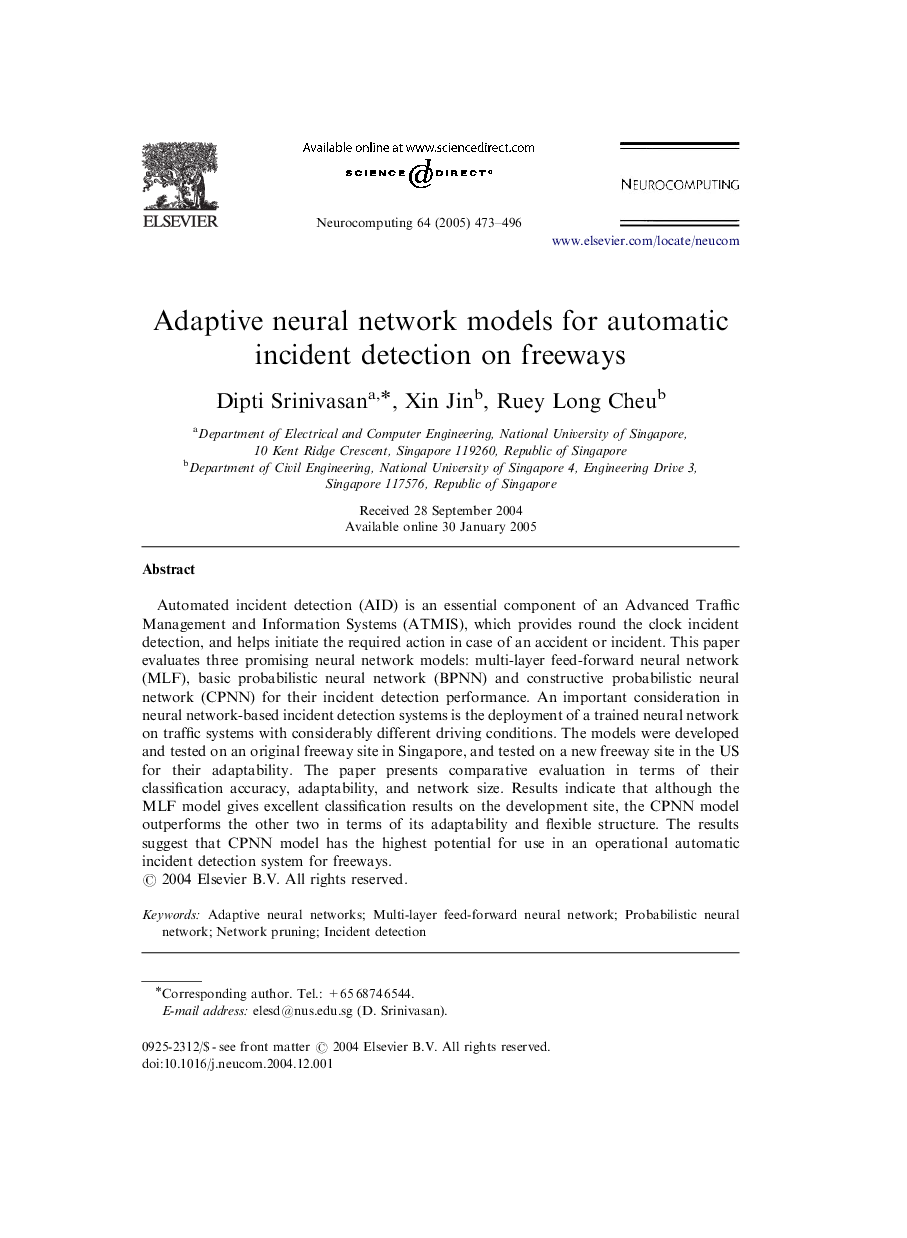| Article ID | Journal | Published Year | Pages | File Type |
|---|---|---|---|---|
| 9653582 | Neurocomputing | 2005 | 24 Pages |
Abstract
Automated incident detection (AID) is an essential component of an Advanced Traffic Management and Information Systems (ATMIS), which provides round the clock incident detection, and helps initiate the required action in case of an accident or incident. This paper evaluates three promising neural network models: multi-layer feed-forward neural network (MLF), basic probabilistic neural network (BPNN) and constructive probabilistic neural network (CPNN) for their incident detection performance. An important consideration in neural network-based incident detection systems is the deployment of a trained neural network on traffic systems with considerably different driving conditions. The models were developed and tested on an original freeway site in Singapore, and tested on a new freeway site in the US for their adaptability. The paper presents comparative evaluation in terms of their classification accuracy, adaptability, and network size. Results indicate that although the MLF model gives excellent classification results on the development site, the CPNN model outperforms the other two in terms of its adaptability and flexible structure. The results suggest that CPNN model has the highest potential for use in an operational automatic incident detection system for freeways.
Keywords
Related Topics
Physical Sciences and Engineering
Computer Science
Artificial Intelligence
Authors
Dipti Srinivasan, Xin Jin, Ruey Long Cheu,
